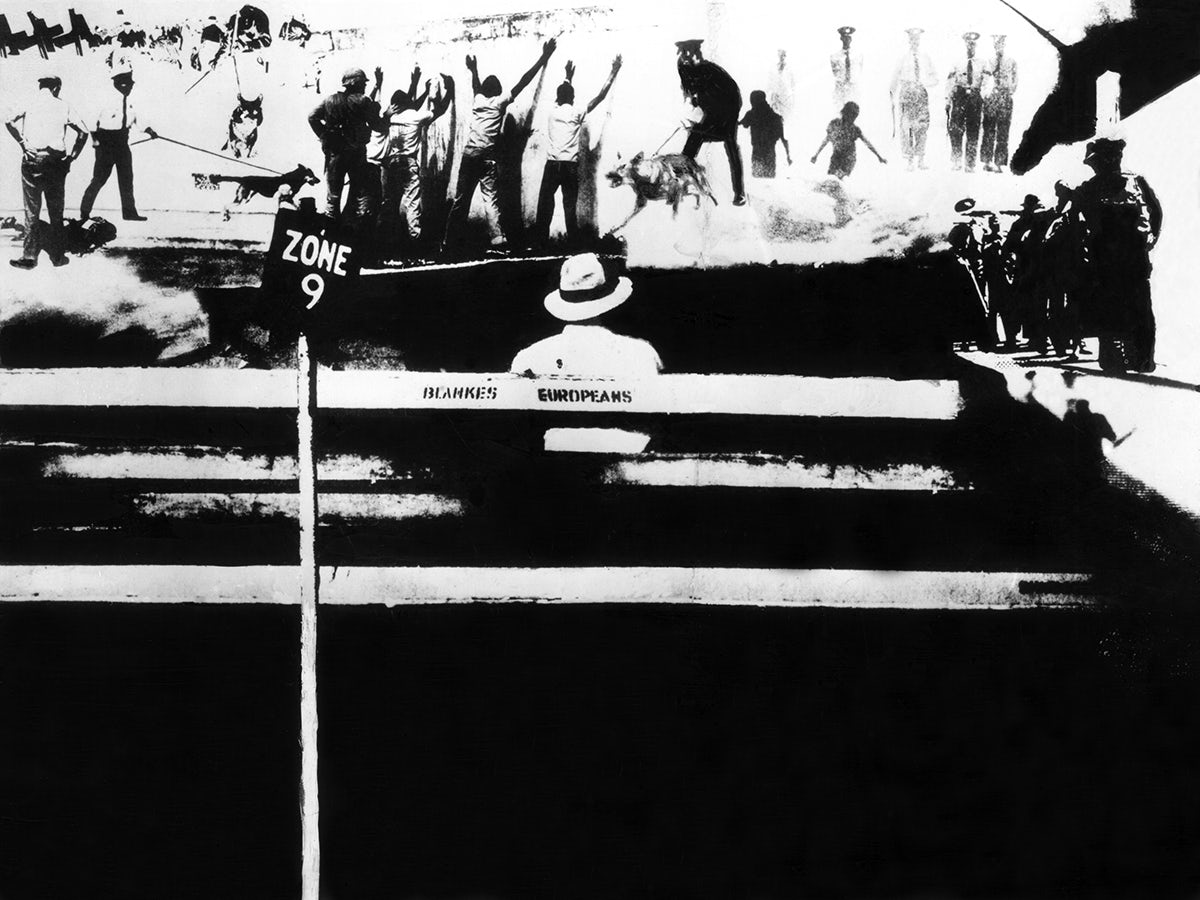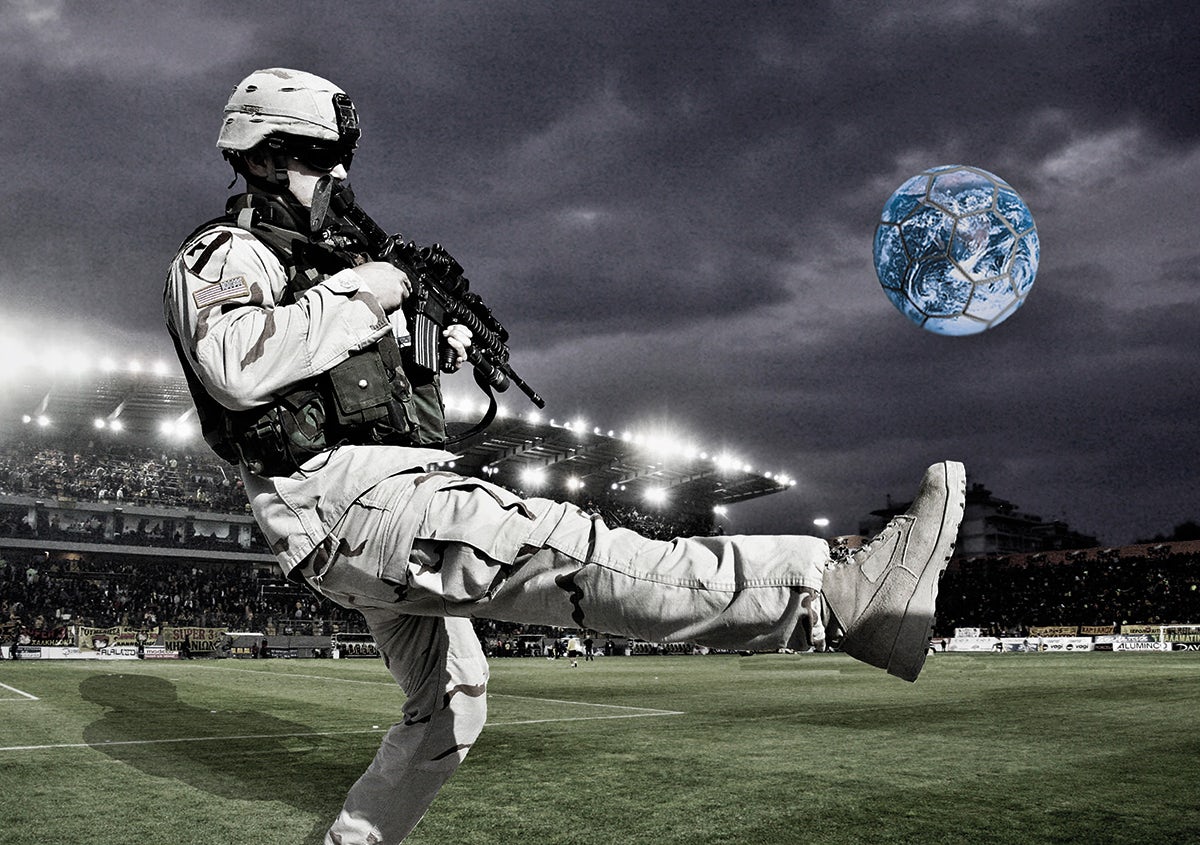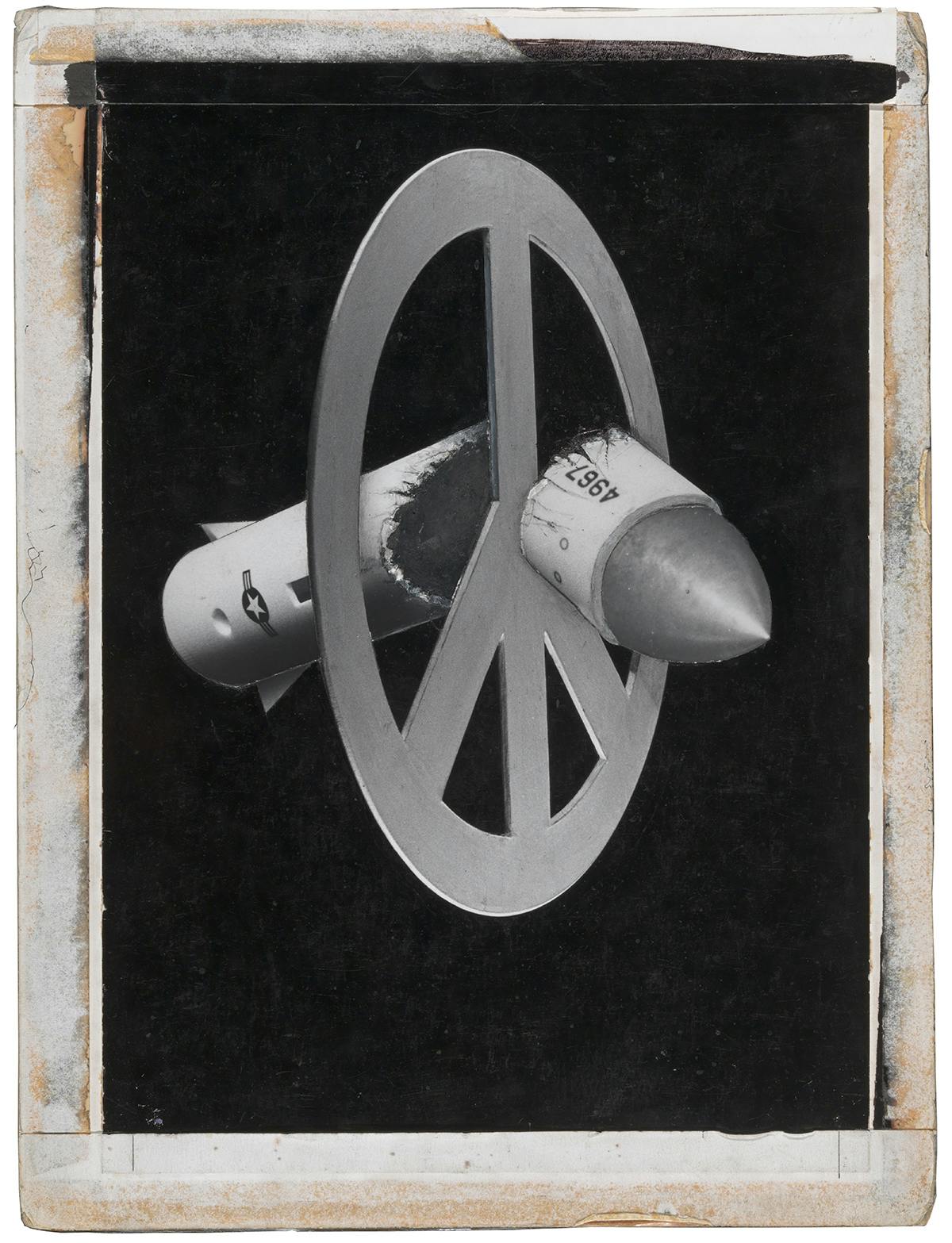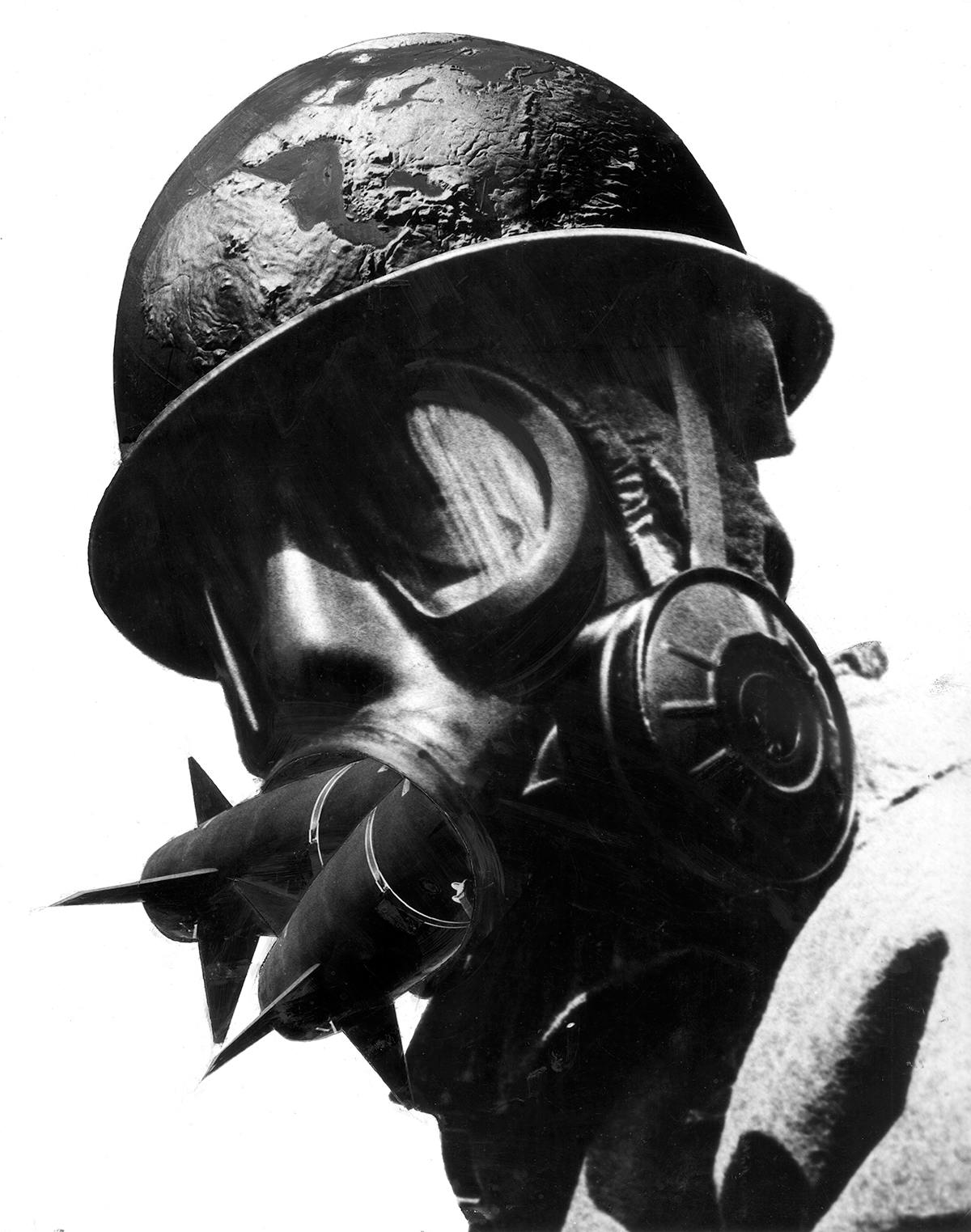Visual Dissent revisits 50 years of Peter Kennard’s radical art
A new book is expanding on the artist’s decades-long contribution to political art, by way of his awakening in 1968 through to his visual critique of modern conflicts
For over five decades, British artist Peter Kennard has been a leading figure in using art to denounce corruption, conflict, and the effects of capitalism. Known for his daring statements and photomontage style, Kennard’s vast collection of subversive art will be the focus of a new title published by Pluto Books.
Peter Kennard: Visual Dissent catalogues 50 years of the artist’s unflinching political creations alongside his thoughts, annotations and illustrations relating to various works. Together, the book lays bare his process and the considerations that went into his pieces, from early conception to landing on the pivotal details that would go on to define each one.
Visual Dissent sets off from his 1969 artwork of Henry Kissinger, Nixon’s foreign policy advisor who had a leading hand in the Vietnam War and the covert bombing campaign that extended to Cambodia and Laos. The Vietnam War would go on to influence much of Kennard’s work in subsequent years, as part of a wider condemnation of activities by the US government. Told from a first-person perspective, it offers an intimate recollection of the stories tied to his work, on both a micro and macro level.

The book also examines the journey of Kennard’s art style, revealing how various political events during 1968 – a tumultuous year that saw the May ‘68 riots in France, the assassination of Martin Luther King Jr. in the US and anti-Vietnam War movements crop up around the world – conjured in him a “political awakening” that led to him pushing his art style in new directions.
In developing his approach to art, Kennard began to move away from painting in favour of his recognisable cut-and-paste photomontage method using found materials, entering a new, more responsive period of his career as a “visual journalist”.
“I started wanting to make art that was actually related to what was going on in the world, rather than a more internal sort of work,” he told CR in an interview last year. “I started using photography because a photo is a kind of trace of reality. You can tear it, cut it, stamp on it, spit on it, whatever you want, but it still takes you back to an actual subject. I started doing photomontage, but instead of being stuck together it was actually layers of negatives overlaid over each other, so that I could bring into the same space what was going on in Vietnam and the Soviet invasion of Czechoslovakia, for example.”

Kennard’s criticism of war reared its head once again in 2005, when he joined artist Cat Phillipps under the joint alias kennardphillipps on a mutual takedown of Tony Blair. Their damning Iraq War selfie featuring a jubilant Blair, titled Photo Op, was described in 2013 by the Guardian as an “anti-war montage [that] is an icon of our time”.
Photo Op hangs in the Imperial War Museum, though the artist has sustained a complicated relationship with other museums and art institutions over the years. Early on the book, Kennard recalls the time the Barbican had asked to remove two of his photomontages created in response to the Chilean military coup in 1973 and the bloody aftermath. “It turns out that Midland Bank has hired the Barbican cinema for a meeting between high-ranking Chilean government finance officials and British bankers,” he says.
Some 45 years later, Kennard played a similar card at the Design Museum as one of a group of artists who chose to remove their work from last year’s Hope to Nope exhibition. The move came in an act of protest following news that the venue had hosted an event for arms manufacturer, Leonardo.
Defiant, unafraid and uncompromising, Kennard’s political statements through art remain as concentrated and pertinent today as they did five decades ago. His more recent works lambast everything from Trump to the 2016 Trident vote, which saw his 36-year-old broken missile photomontage resurrected for the campaign against renewing the nuclear weapons system.
Visual Dissent is a testament to Kennard’s undying disdain for the powers that be and his immovable commitment to exposing them through art – as well as the role of the art world in the very issues he denounces.
Peter Kennard: Visual Dissent is published by Pluto Press and is available for £19.99; plutobooks.com





















